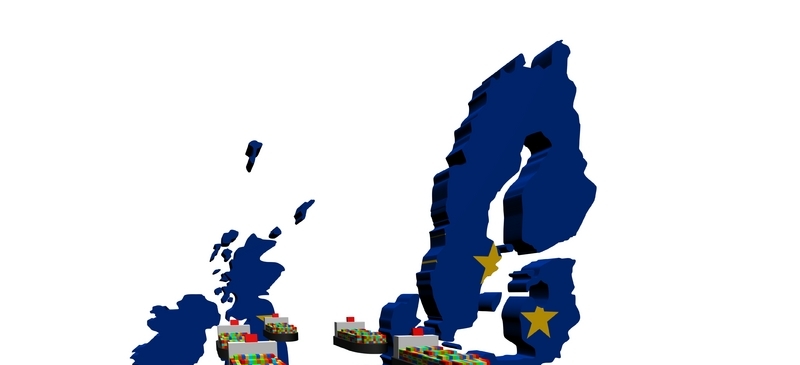
The long road to Doha
The launch of a new round of multilateral trade negotiations by the World Trade Organisation (WTO) at Doha was not only a major accomplishment, it was a case of snatching victory from the jaws of defeat. As recently as six months ago, few would have predicted that the world's trading nations could reach agreement on anything beyond the narrow 'built-in agenda' left over from the end of the previous Uruguay Round.
Yet WTO members are now embarking on an ambitious, although somewhat ill-defined agenda that includes: the broad 'new issues' of competition policy; investment rules and the relationship between trade and the environment; talks on agriculture which contemplate the possibility, although they do not yet require, the "phasing out" of "all forms of export subsidies"; negotiations on anti-dumping measures and subsidy rules, which the United States had previously vowed never to permit; and an emphasis on developing countries' needs which is so pervasive that it is hard to find a single paragraph in the Doha conclusions where the word development does not appear.
How did this stunning accomplishment come to pass? US Trade Representative Robert Zoellick deserves much credit for his willingness to give ground on developing country concerns. Zoellick placed anti-dumping and subsidy rules on the negotiating table and also orchestrated a ministerial declaration which authorises developing countries to ignore patent limitations on the use of medicines in catastrophic epidemics such as AIDS.
But the efforts of the EU, and in particular the vision and subtlety of the EU trade commissioner, Pascal Lamy, were also fundamental to the success at Doha. Lamy has worked tirelessly to rebuild developing country support for a new round. The EU trade commissioner was instrumental in switching the focus of talks specifically towards development issues. Lamy's close working relationship with Zoellick also made compromises on key issues possible - especially in the areas of agriculture and the environment.
This broad and ambitious round should ultimately provide a major boost to the EU economy. However, there are still two major obstacles to ensuring that the success of Doha becomes a reality. First, the declaration establishing the new round - though ambitious in concept - is ambiguous or subject to change on major points. A chairman's statement issued after Doha suggested that negotiations on issues such as investment and competition might not take place if a consensus on the basic principles is not reached by early 2003. The environmental and agricultural negotiating mandates are also heavily qualified. The phrasing of the agreement suggests that the parties will be able to conclude the talks by agreeing to disagree.
These ambiguities are further complicated by a second factor - namely, the fact that the development orientation of the round is a double-edged sword. Ever since Seattle, a vocal group of developing countries led by India has argued that the principal way for the WTO to assist development is for it to make concessions on the implementation of previous agreements- on issues such as intellectual property, services, and even tariff reductions. Indeed, the Doha Declaration provides for such implementation issues to be considered in every negotiating area. The major challenge for the EU and other developed countries will be to assemble a sufficiently attractive package on improved market access, so that the developing countries drop this backward-looking focus on implementation.
A further risk to the round arises from the fragile nature of domestic political backing in the United States and Europe. Anti-globalisation protesters may have taken a breather after September 11th, but the tight vote on the Trade Promotion Authority ('fast track') in the US House of Representatives shows that support for new trade agreements is weak. The negotiatiors must respond to this reality with new initiatives such as increased assistance for workers who lose their jobs after the removal of protective tariffs. It is also time to consider the integration of multilateral environmental agreements within the WTO system.
This round will be a success if - and only if - Europe and the United States put aside their own trade differences. This is particularly urgent because at least two new and volatile issues are approaching flashpoint: the apparent US intention of restricting steel imports, and US complaints over EU testing and labeling of genetically modified foods and animal feeds.
Europe and the United States must also find a common approach to the WTO round. The two sides have very different approaches to many of the key issues. They disagree on how to cut the remaining import tariffs. More importantly, they also differ on agricultural subsidies, investment rules and whether competition issues should be dealth with by the WTO.
The key to ensuring Europe and the US co-operate effectively is the resolution of the transatlantic dispute over the US Foreign Sales Corporation (FSC) tax law. In January 2002, the EU won an important appeals case when the WTO ruled, again, that the FSC is an illegal subsidy. The European Commission has skilfully used its earlier victory in the FSC case - which gives it the right to seek $4 billion in compensation - to emasculate US complaints against the EU. Europe should now seek a more enduring deal with the US, trading off the FSC ruling for an agreement on issues such as GMO products and above all, a high-profile joint approach to the key issues in the new round of trade talks.
The new round is a watershed in the evolution of a truly open trading system and the effective and beneficial participation of the developing world. But it is a fragile round, with as much potential for reducing free trade as for the major advances promised by the Doha Declaration. If ever there was a time for Europe and the United States to resolve or put aside their bilateral disputes and work for a common goal, it is now.
